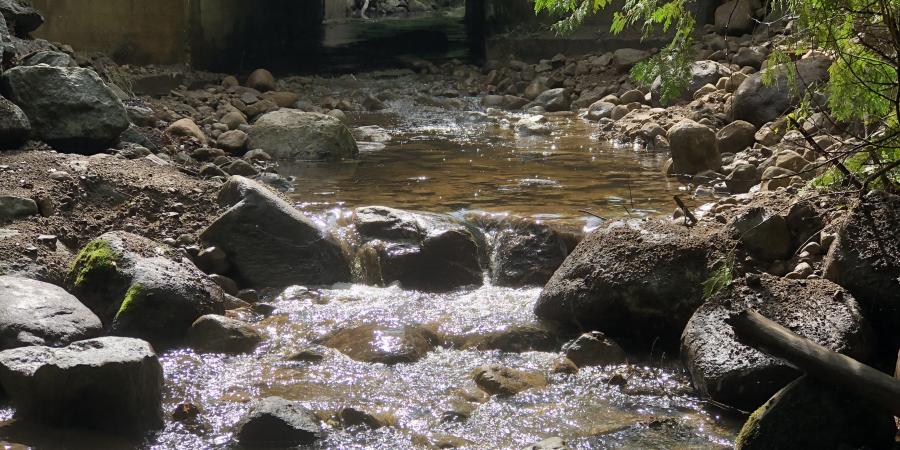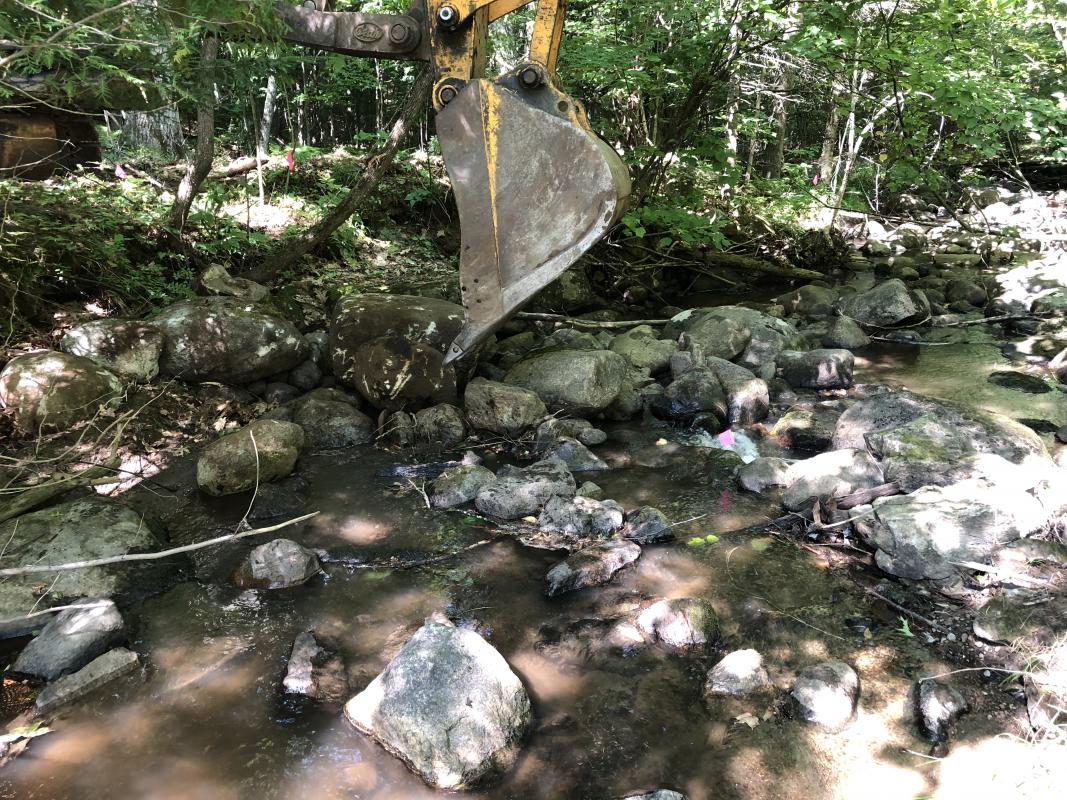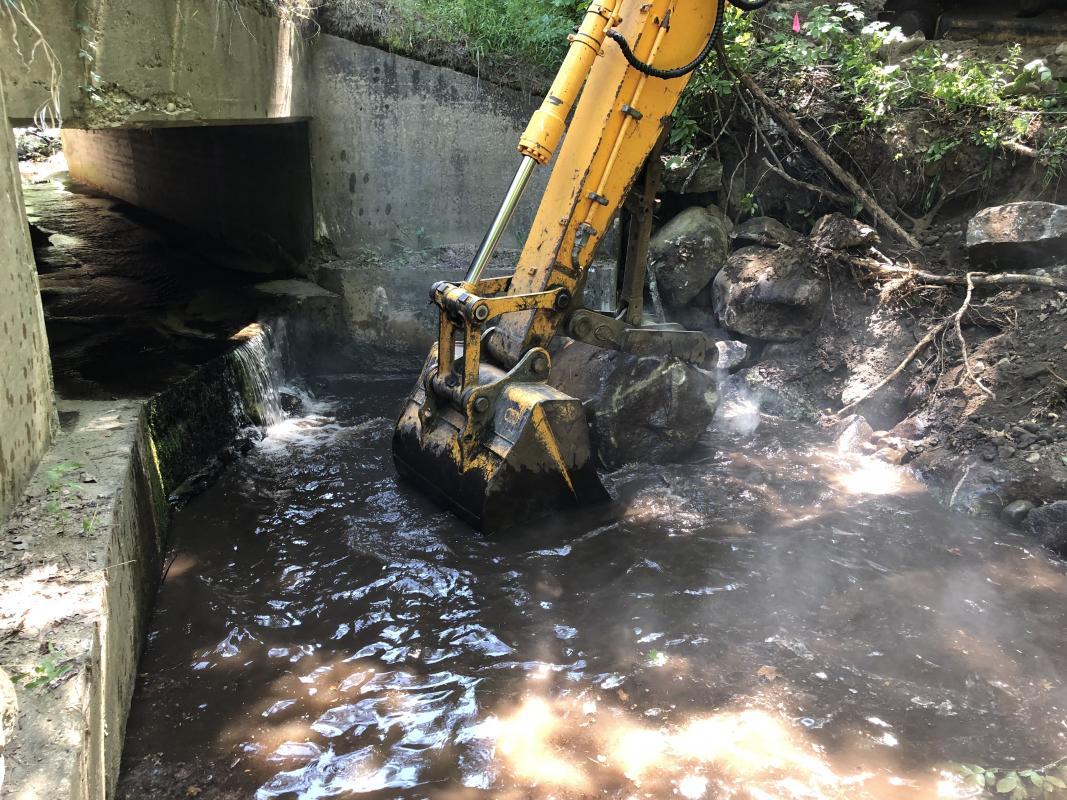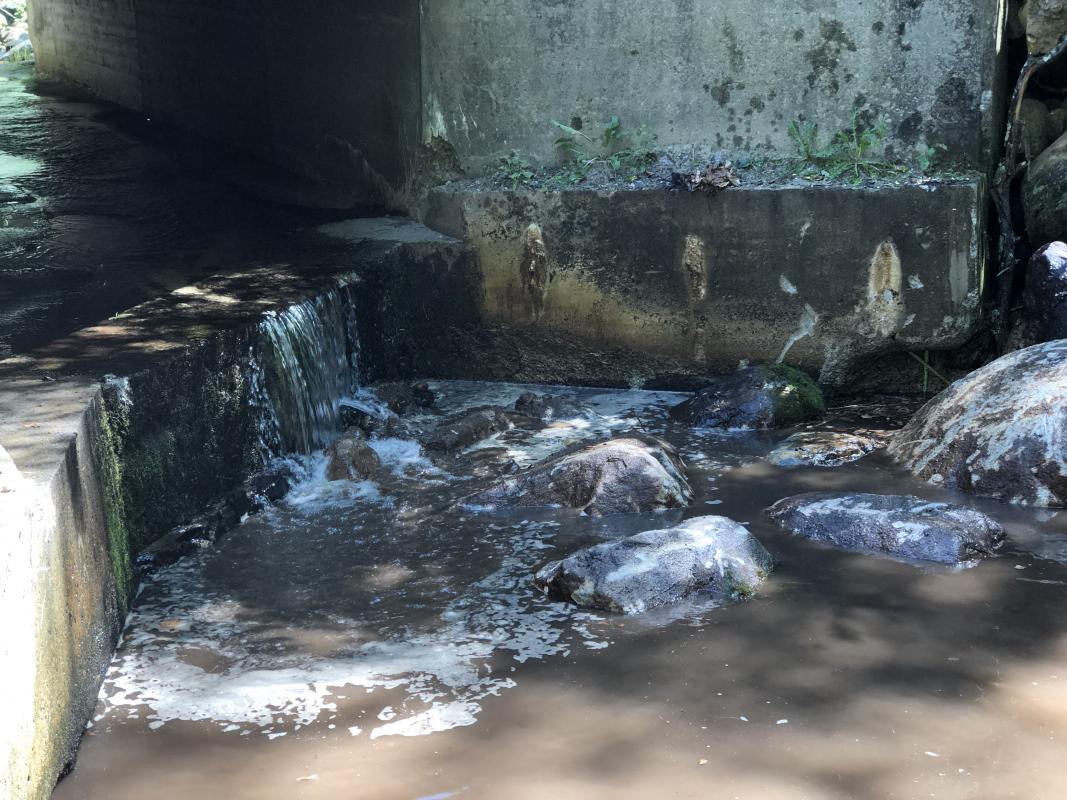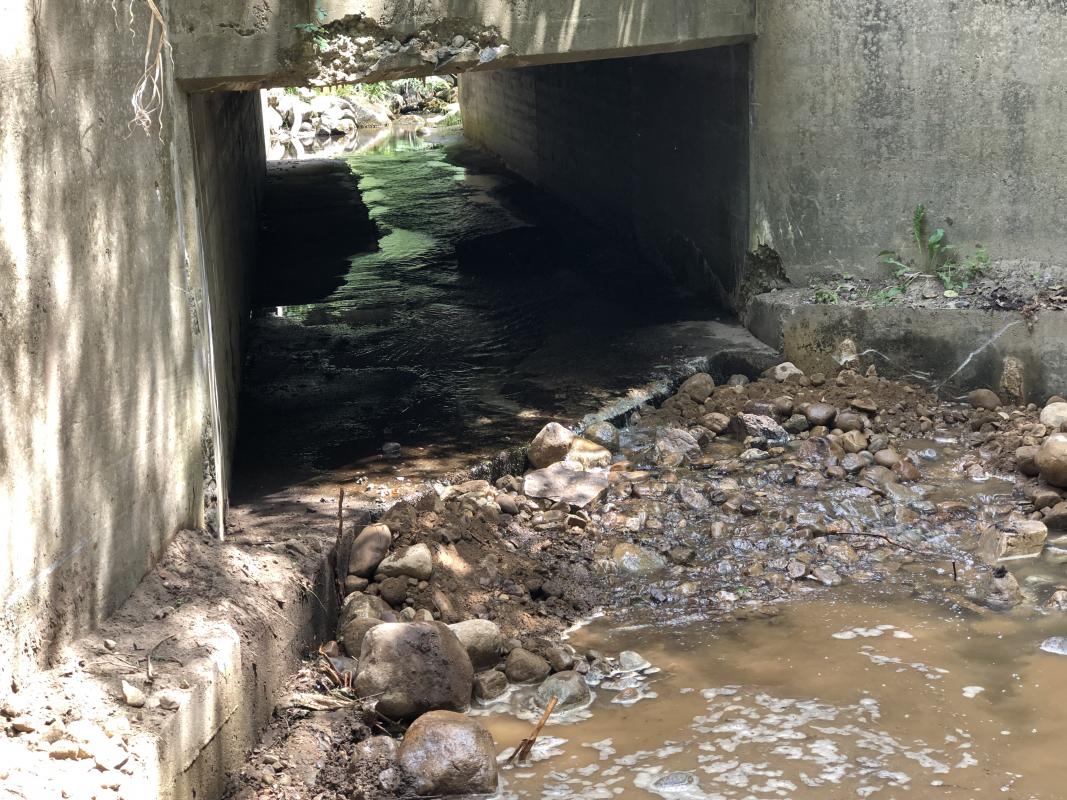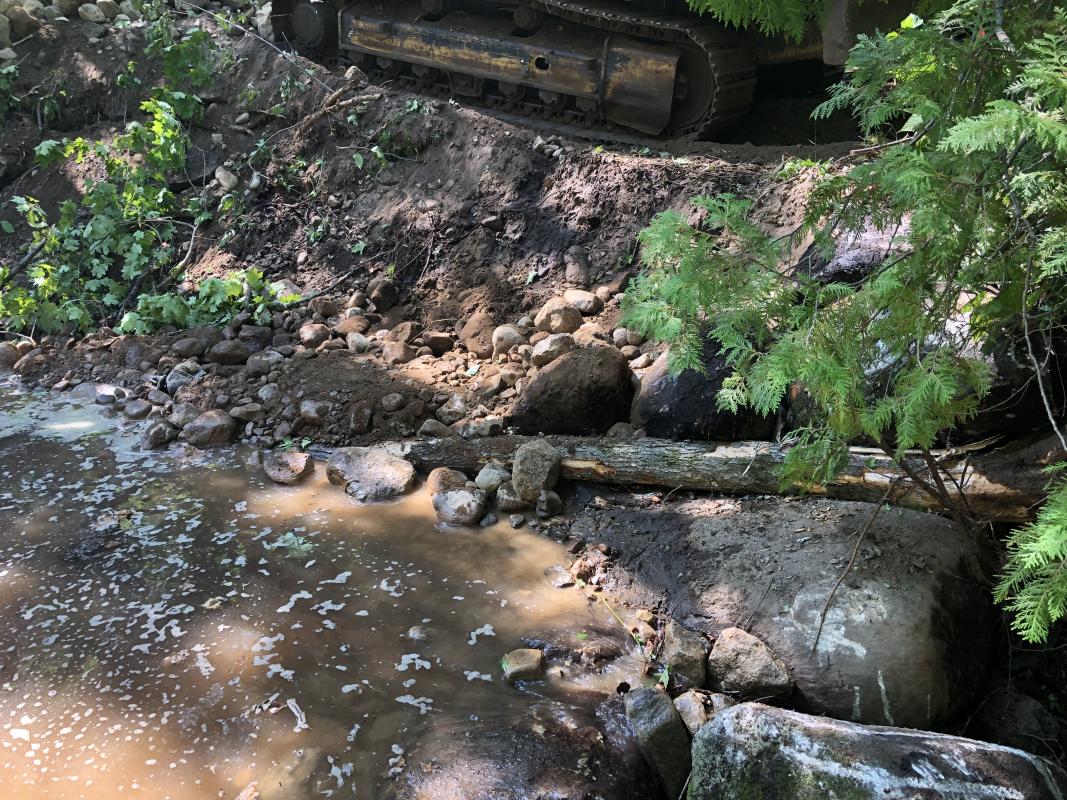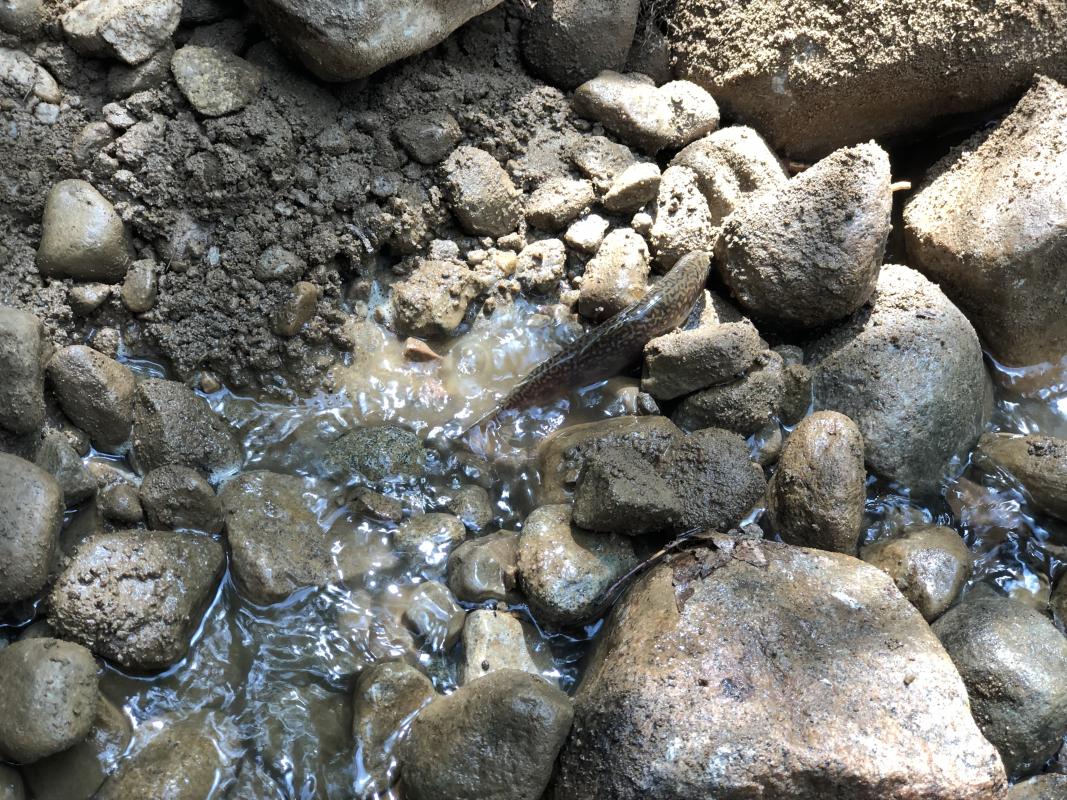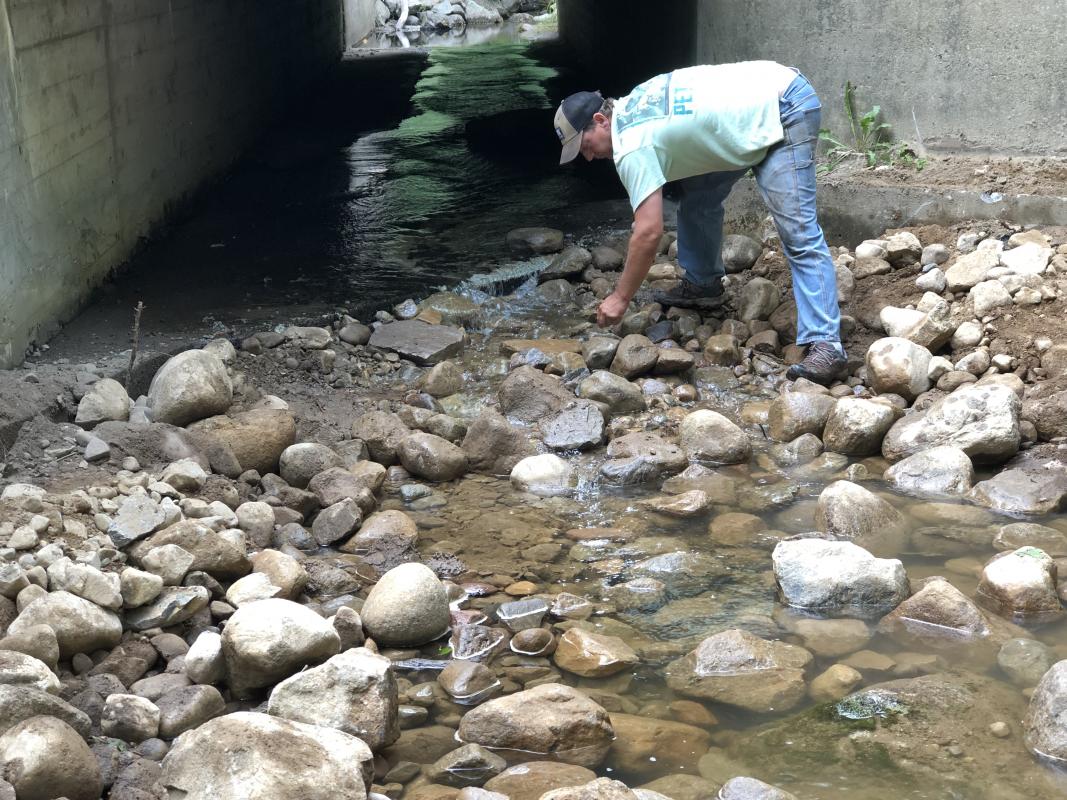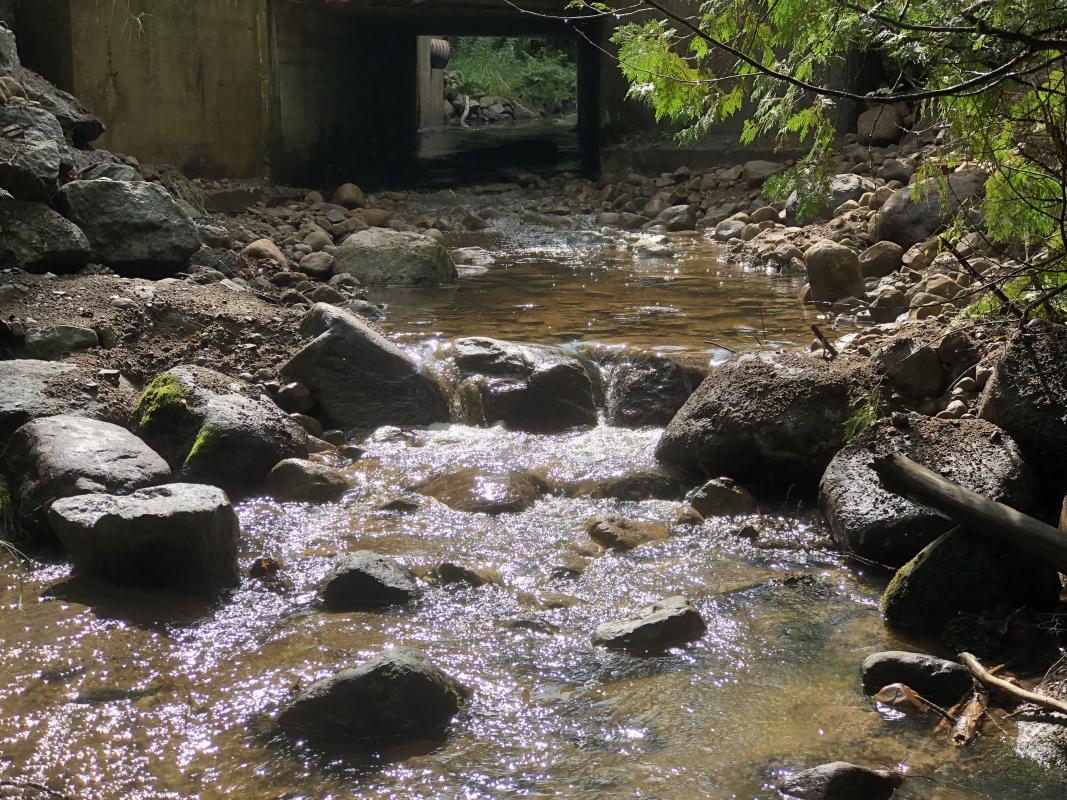How do we ensure the health of wild streams?
Restoring connectivity by replacing or retrofitting undersized, collapsing, or deteriorated road crossings is one essential step. The 4-sided concrete structure in the "before" photo below is slightly undersized and the smooth bottom is less than ideal for fish. Nevertheless, it was a functional crossing before high water from Hurricane Irene scoured away the bed and banks of the stream just below the culvert outlet leaving a 5-foot hole, a 2-foot drop to water surface, and badly eroding banks. Instead of a costly full replacement on this Essex County road, AsRA recommended retrofitting the stream.
Before:
Over the course of a year, AsRA's Kelley Tucker surveyed, designed, and permitted the retrofit. This week, working with Mike Ward of Ward Logging and with support from the U.S. Fish and Wildlife Service, she supervised the 3-day project. We restored two steps, oxygenating water and creating a step-pool structure, and filled the 4-5' deep scour pool, creating a smaller pool and a natural passageway into the culvert. We also rebuilt the eroding bank using a log vane and natural stone to stabilize it. The results can be seen in the "after" photo below.
After:

Otis Brook is full of small brook trout, invertebrates, frogs, toads, and salamanders; an abundance of mammals frequent it; all are reliant on its cool, pure waters. It is a refuge, a rich ecological haven capable of protecting multiple species from the challenges of development and climate change. Where undersized and poorly designed culverts interrupt it, Otis Brook loses functionality and wildlife lose habitat - options for foraging, finding shade, safety or a mate. But solutions are available. AsRA is working to restore connectivity to small streams throughout our region. Click here to view a map of our climate-ready culverts.
